This has been our longest family vacation at 18 days, and it was a rare opportunity for us to be able to take such a holiday. The vacation went remarkably well: we were able to hit most of our planned itinerary; I judge our completion at around 90%, a better rate compared to last year’s trip to Kansai. The places of stay we decided on were invariably minimally decent places of stay, with some really good ones – Toggle Hotel Suidobashi and Stay Nikko Guesthouse being particularly solid – and we didn’t miss any of our connecting trains.
Still, with the benefit of hindsight, our itinerary could had been further improved. Our notes summarising our experiences and reflections of each major place we checked out this trip! This will be a very long post, so it’s split into two parts. This first part below covers Days 01 to 08.
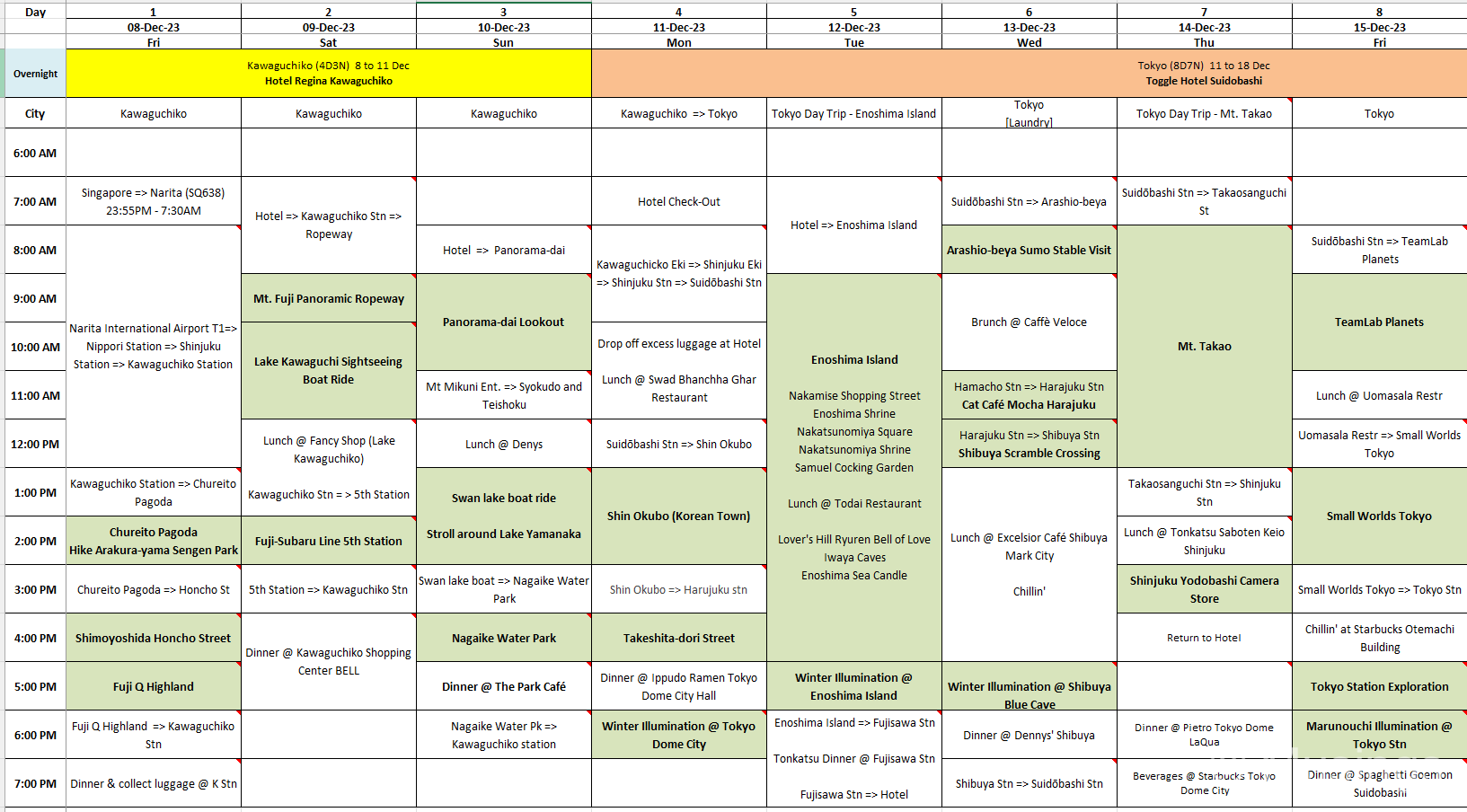
Day 1 (Tokyo – Kawaguchiko)
Travel from Narita International Airport to Kawaguchiko (3 hrs): our initial fears over the time it’d take for us to clear immigration and collect our baggage were unfounded: we quickly cleared all airport procedures in about an hour, then took another 5 minutes to forwarded our larger of two luggage cases to our Kawaguchiko hotel. We took the Skyliner from Narita to Nippori Station, then another short train ride to Shinjuku Station. From there, we hustled over the the adjourning Shinjuku bus terminal for the express bus to Kawaguchiko. Once at the station, we easily found sufficiently large lockers for our second luggage case, deposited it there, and headed to the first spot.
Chureito Pagoda (1 hr) [blog post here] we reached Arakura-yama Sengen Park in good time from Kawaguchiko Station. The hike up was a different matter: what with the several hundred steps in the pretty steep climb! The observation platform was pretty crowded, but – aside from the persons who were hanging around to take pictures of the coming sunset, most visitors were contend to take some pictures, then head back down. Pro-Tip: Mt. Fuji looks best from this location in the morning. The mid-afternoon we were there showed particularly harsh lighting, with the sun towards the right and in front of the observation platform. This made taking nice pictures really difficult.
Shimoyoshida Honcho Street (0.5 hrs) [blog post here]: from Arakura-yama Sengen Park, it was another short bus ride to Honcho Street to take get those iconic pictures of a small town with Mt. Fuji in the background. There is a popular spot for photo-taking – just follow where the crowd is going. You’d need to employ common sense though: the number vehicles going through the street isn’t infrequent at peak hours and not moving at exactly snail speeds. Visitors need to comply with the instructions that the traffic marshals provide. Pro-Tip: you can walk further uphill down the street for a slightly different perspective. Either way, you need to employ photo compression to get the necessary visual effect: smart phone cameras with 3X zoom should suffice, or better still, an interchangeable lens camera with a travel zoom lens that start from 70mm at least.
Fuji Q Highland (1 hr) [blog post here]: it was pretty late in the evening already, but the Mt. Fuji 3 Day Pass we’d picked up had one complimentary ride included at the Fuji Q Highland, so we went for it. The park has a number of rides, including several for thrill-seekers, and the close to end of day timings we went meant there weren’t long queues for rides. You could consider spending a couple of hours in this park if you’d arrived early and have time to spare.
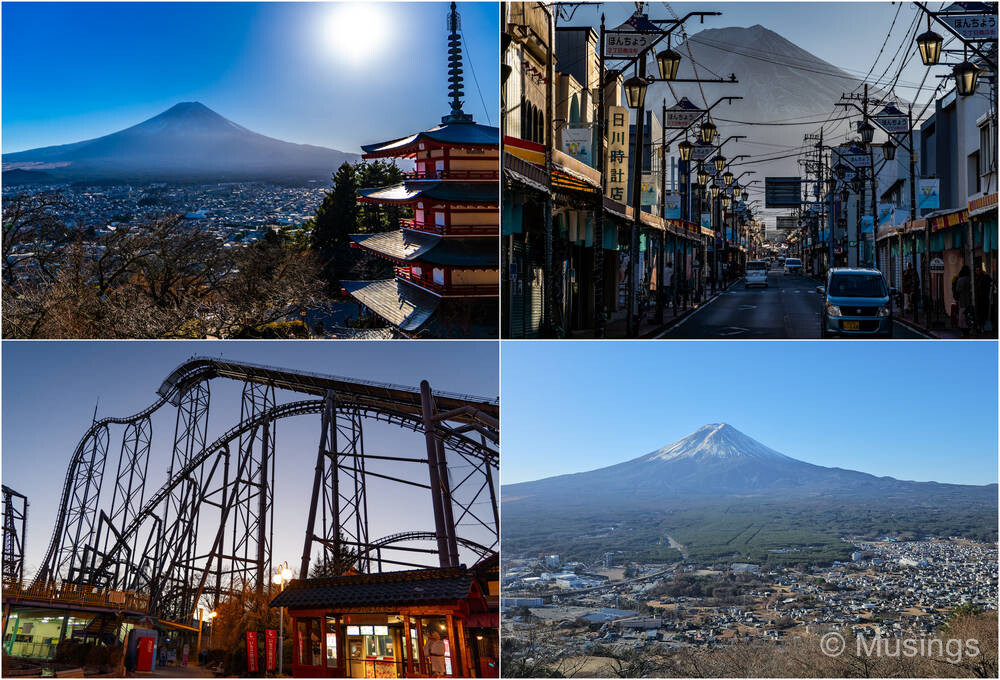
Day 2 (Kawaguchiko)
Mt. Fuji Panoramic Ropeway (1 hr) [blog post here]: the observation deck is accessed by the ropeway that’s opposite Lake Kawaguchi, and it offers a clear view of Mt. Fuji on a good day, with the built-up areas in the foreground. There are a couple of viewing points: the deck itself, the roof-top deck of the souvenir and food outlet, and also at a swing that sits on a small hill that you can walk to in a minute. The swing is a paid ride, but it seems to offer a view that’s accessible at the highest elevation in this area. The direction of the sun wasn’t perfect though: it was in the front and on the left, which might cast harsh shadows depending on the angle of your shot. You’d likely spend perhaps 30 minutes at this observation deck before you head down.
Pro-Tip: queues form fast, and by the time we left the area at noon, the queues had snaked down to the main road. So, you have a difficult decision to make: if you chop-chop go early in the morning, then you likely won’t have to waste time in the queues – but this would be at the expense of pictures.
Lake Kawaguchi Sightseeing Boat Ride (30 minutes) [blog post here]: the boat ride is a lot of fun. It does a loop around the lake, and if your boat is uncrowded, then it’d be easy for you to move to the port side first to get pictures of Mt. Fuji from the lake itself, then pivot to the starboard side for more of the same as the boat completes the loop. Pro-Tip: The view from either side is the same, so don’t feel like you’re missing out if you opt not to shift from your comfortable seat!
Fuji-Subaru Line 5th Station (2 hrs) [blog post here]: the 5th Station sits about two-thirds up Mt. Fuji, and is the easiest way for you to get a close-up look at the snow-tipped peak of the mountain without actually making a climb! There is a large souvenir and F&B shop at the 5th Station that sells items that are considerably marked up in prices. The station area is pretty big, and there is a viewing deck behind the souvenir shop where you can great views of the mountain peak. Pro-Tip: Take note of the timing of the last departure bus, and join into the queue early as needed: this is not a place you want to be stuck at!
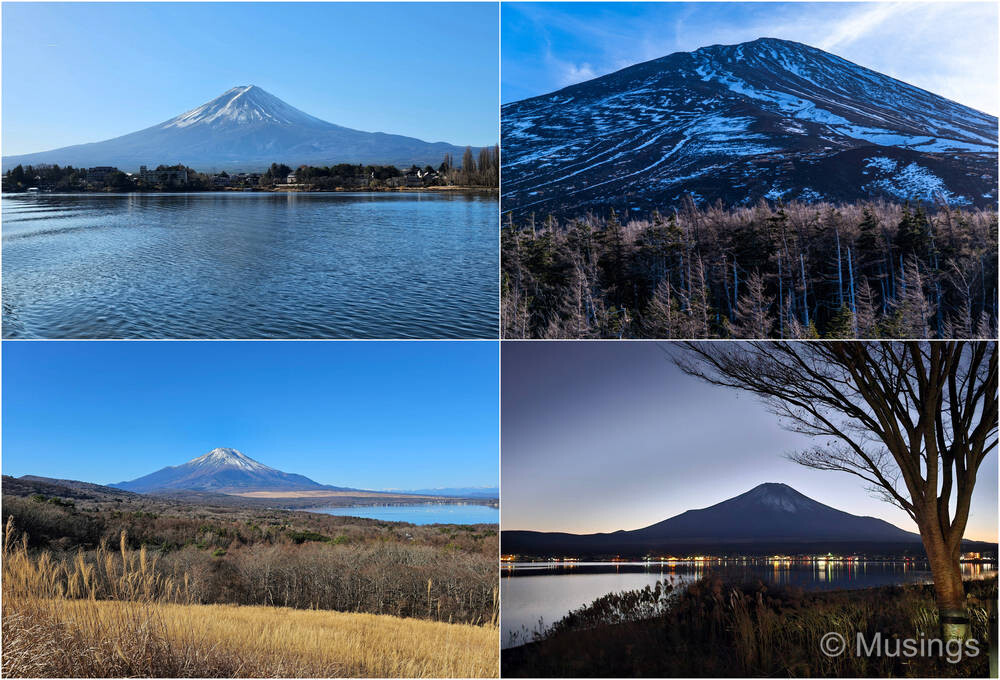
Day 3 (Kawaguchiko)
Panorama-dai Lookout (2 hrs) [blog post here]: the lookout sits around Lake Yamanaka, and isn’t on the route of most tour buses. Most visitors would either drive up – which would make getting to the lookout point a totally painless and quick affair, or do the silly thing like we did: take a bus from Kawaguchiko to the Yamanaka side, then hike the trail that includes a very steep segment towards the end. To clarify: the trail isn’t really interesting. The payoff is unquestionable though: you get a wide panoramic view of Mt. Fuji and the lakes area. And if vanity selfies are your thing, this is also a spot you can get showcase-worthy pictures that are not run of the mill from Lake Kawaguchiko, Chureito Pagoda, or Honcho Street.
Lake Yamanaka (3 hrs+) [blog post here]: the highlight of our Day 03 turned out to be the relaxing afternoon we spent around at Lake Yamanaka. The area is pretty lifeless at night, but is wonderfully scenic and peaceful during the day time. Again, the place isn’t the easiest to get to and like the Panorama-dai Lookout, and isn’t on most people’s radar when they visit Kawaguchiko. We recommend taking the lake pedal boats, if nothing else to feed the swans. There are numerous pedal boat providers that work the area, so Pro-Tip: take careful note of which provider and jetty you rowed out from, and return to the same place. The jetties look alike!
Nagaike Water Park (0.5 hrs) [blog post here]: this was a spot that looked good on paper but turned out to be less interesting in actuality. You do get to take great pictures of Mt. Fuji from across the lake, but that’s it. Also, don’t be like us: if you’re visiting this spot in the late afternoon and taking public transport, make sure you do not miss the last bus! [Pro-Tip there too.]
Day 4 (Kawaguchiko – Tokyo)
Shin Okubo (2 hrs) [blog post here]: this spot was included largely for our daughter, she being the big K-Pop fan. The street has a huge number of shops that sell Korean cuisine, including sit-down restaurant-type fare, and snacks. And there are shops aplenty that sell all manner of K-Pop group merchandise, including what looks like not very authentic ones occasionally!
Takeshita-dori Street (1 hr) [blog post here]: this was one mega-crowded street for all things hip and modern. Fashionistas would love the place. Us, not so much: and we largely visited just to see what the fuss was about.
Tokyo Dome City and Winter Illumination (1 hr) [blog post here]: this huge sports, entertainment and retail complex was just a five minute walk across the road from our stay in Tokyo, Toggle Hotel Suidobashi. The range of retail and dining options isn’t as wide as some of the super-sized multi-level malls elsewhere in Tokyo city. But it was uncrowded, had a beautiful atrium level with a musical fountain, and in the evenings, the towering Ferris Wheel and and Roller-Coaster rides make for great backdrops in photos. The place is also the site for one of Tokyo’s dozen or so Winter Illumination places: the lit-up area isn’t anything to shout about, but it’s still OK for a look if you like your winter light-up pictures to be relatively free of people that you otherwise would have to magic-erase away in post-processing haha.
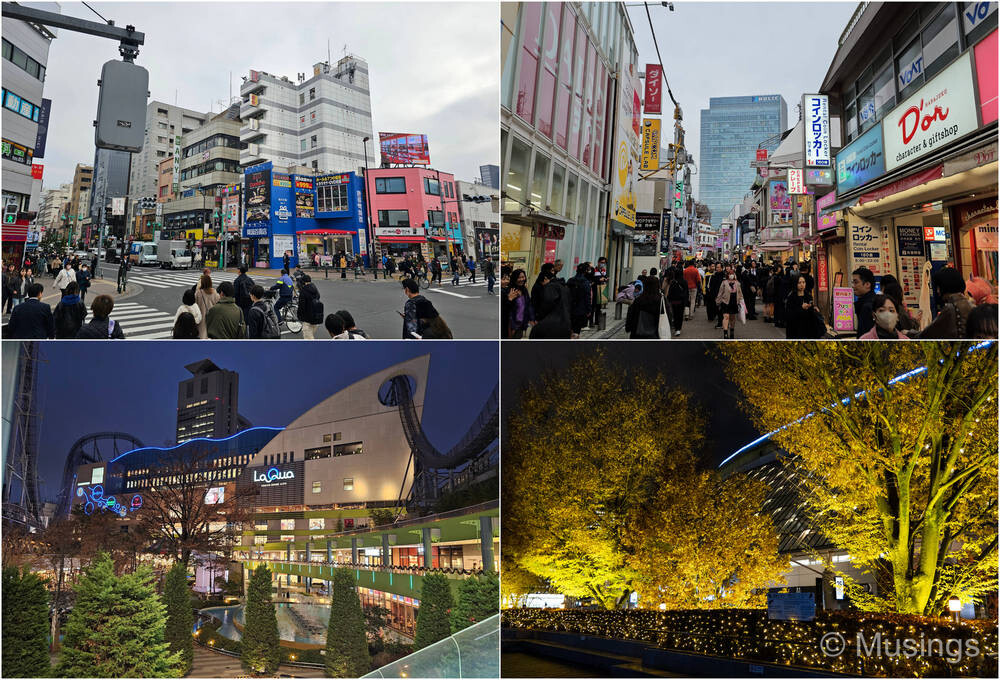
Day 5 (Enoshima Island)
Enoshima Island (whole day) [blog post here]: we spent an entire day here and stayed till early evening for the winter illumination light-up, and it was worth the time we spent! The island is pretty easy to get to from Tokyo. The question to consider though is whether any additional premiums you have to pay for accessing the escalators is worth it. Our feel of it is no: the first escalator does cover a good degree of elevation, and not taking it will provide you a good workout as you climb the stairs. But the next two elevators only travel a short vertical distance which you should have no difficulty with the stairs. And if you’re slowly making your way up and thoroughly checking the places at each spot before further ascending, then you’re unlikely to take each of the escalators more than once, and going up only. So, Pro-Tip: unless comfort is everything to you, do that manageable little bit of exercise and skip the escalators.
Samuel Cocking Garden (0.5 hrs) [blog post here]: the garden in winter is pretty drab: not much flora to see. There are a couple of cafes in the Garden that provide light eats, and viewing decks for you to get great pictures of the mainland. But beyond that, that’s it.
Sea Candle (0.5 hrs) [blog post here]: our admission to the Sea Candle was included in the all-in passes we bought, and it was unlimited entry via lift to the viewing deck at the top of the tower. I’m not sure if the non-pass tickets to access the tower are single-use. Either way, we went up to the deck twice: in the late morning, and at sunset. The view is fantastic, and there is seating in the higher and outer deck if you can brave the winds. On a less windy and/or cold day, you could spend hours at the outer deck and contemplate life!
Iwaya Caves (1 hr) [blog post here]: the cave network doesn’t burrow very far in, and if you’ve been to cave systems elsewhere in the world (we’ve only been to the ones in Australia), then the Iwaya Caves are miniscule in comparison. Cave 2 though was special with its winter illumination light-up: while the tunnel is pretty short, it was stunningly beautiful with the lights.
Even if not, the route via the walking bridge provided for some awesome perspectives of a rugged Japanese coast. The bridge might be closed in inclement weather, so do note.
Winter Illumination (1 hr) [blog post here]: we got only one Pro-Tip here: you absolutely must stay for the winter illumination! Of the five winter light-ups we saw this trip, this was by far – and I mean a long way here – the most visually stunning illumination, followed by the light-up at Matsumoto Castle.
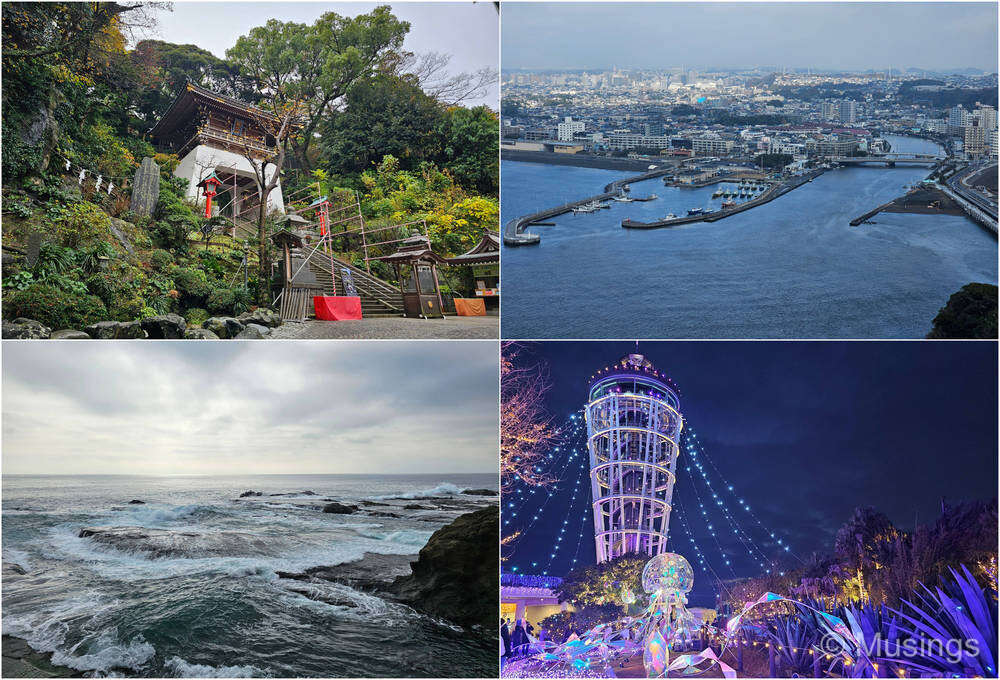
Day 6 (Tokyo – Harajuku and Shibuya)
Arashio-beya Sumo Stable (1 hr) [blog post here]: we being the cheapos when we holiday, we opted not to pay the super high premiums for a private tour of a Sumo stable, and instead chose to participate in the free version: by observing Sumo wrestlers in training through a window! The crowd can grow fast, so you will want to get in early and into a good spot in front of the window – the training room is only so big and the full-height windows span only that wide. The wrestlers in this stable came out for photos after their morning segment was done at about 9:15AM, so if you can spare the time, be certain to stay till then to see if you’re also lucky. Pro-Tip: Taking pictures through reflective windows though is a challenge, so you’d want to come prepared. If you have prime lenses, a 35mm or 50mm should be perfect. Anything longer means you’d focusing primarily only on the wrestlers’ faces, or bellies haha.
Cat Cafe Mocha Harajuku (1 hr) [blog post here]: Cat Cafe Mocha has a number of outlets in Tokyo – perhaps half a dozen. In a sense, the felines in this cafe are not finally very different from what we have in Singapore, or so the daughter says. But what is possibly a superior point at least is the range of complimentary beverages served in the cafe: the cafes that H visits routinely only serve soft drinks. But in at least the Harajuku outlet, there was a range of hot and cold caffeine type beverages. That certainly kept us adults happy while our two kids ran around to play with the cafe residents. Pro-Tip: if you’re visiting with kids, be certain to check the minimum age to enter the cafe. The chain has different age requirements for different cafes, so choose cafes wisely.
Shibuya Scramble Crossing (0.5 hrs) [blog post here]: This is one of those things you just have to go see for yourself, and tick it off your bucket list of to-do things. There were so many visitors doing their vanity poses that the locals who’re using the crossing to be on their way to work/business/social activities don’t seem to care or mind anymore. There are also of course vantage points for you to get a fantastic view of the organised chaos, but the best ones seem to involve some sort of expenditure, e.g. access to a special area for a great view, or from within a F&B outlet where you’d need to buy something. The Hachikō Memorial Statue is also at one of the four corners of this crossing, so be sure to get your pictures of the statue of this very famous dog. Queues are common for visitors to this memorial, but they seem to move fast.
Shibuya Blue Cave Winter Illumination (0.5 hrs) [blog post here]: This winter illumination spot gets rave reviews, but we personally didn’t find it that interesting – more so that we’d just seen the winter light-up at Enoshima Island the previous evening. It isn’t just the large crowds: but that the blue lights make it hard to get pictures of human subjects against the light-up. Still, the spot is fairly easy to get to if you’re already visiting the Shibuya Scramble Crossing, so you might as well. But if not, then don’t feel like you’re missing something major.
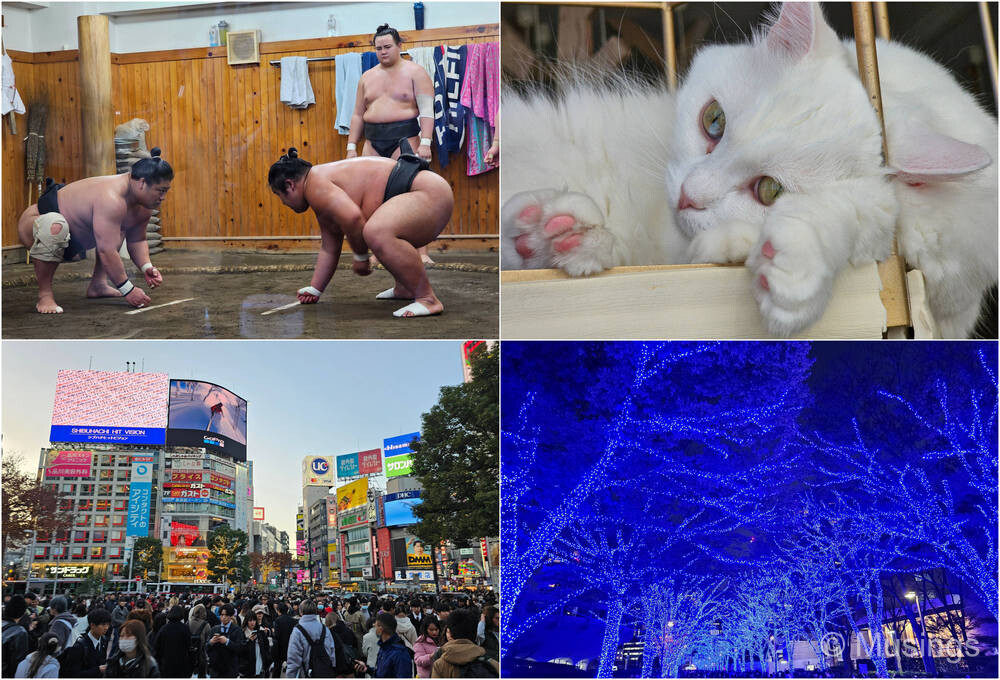
Day 7 (Mt. Takao and Shinjuku)
Mt. Takao (3 hrs+) [blog post here]: This was an OK half-day trip out of Tokyo. The base station is easy to get to, and you have several options to get you half of the way to the peak for a view of Mt. Fuji. We were lucky the day we went up: the sky was clear and we saw the mountain clearly, and took some memorable pictures. That view though is not guaranteed: several persons on the social media groups on Japan we’re on commented that they’d just visited Mt. Takao a few days before we did and saw nothing. Then two days ago on the 22 Dec, we had friends from our small group who did the same climb in the late afternoon, and were able to get pictures of Diamond Fuji. So, Pro-Tip: Mt. Takao is easy to get to, and if you have the time to spare, consider keeping the actual date and time you want to visit flexible. The day you’re certain the sky would be clear, grab the opportunity and spend the 3 hours you need to chair lift or ropeway up, another hour to reach the peak, and another hour to return back to the chair lift/ropeway station to go back down.
Shinjuku (3 hrs+) [blog post here]: There is a lot to see and explore in the Shinjuku area, and we only checked out a small area of it. If your Tokyo itinerary is anything like ours, i.e. multi-day and a DIY plan, then chances are high that you’d be visiting Shinjuku Station at least numerous times, it being a major transit and connection station. That’d provide numerous opportunities for you to visit what interests you in this area.
Day 8 (Tokyo)
TeamLab Planets (1 hr+) [blog post here]: This interactive museum is a must-visit! The prices are a little on the high side, but the experience is simply refreshing and not something you’d see often. Picture taking is a must, and in several cases, you’d be taking pictures in very low light. The natural inclination would then be for you to bring a large sensor ILC, but just keep in mind that you’d need to ensure your gear is properly harnessed and secured, e.g. via wrist or shoulder straps. You absolutely would not want to drop your gear into the water! There also doesn’t seem to be any checks against visitors repeating the circuit as many times as they like. So, if you have no compunctions about possibly being a nuisance and contributing to the density of crowds already in each exhibit, go for it (I guess!). Pro-Tip: the queues will form no matter what slot you choose, so don’t feel compelled to do this as a first activity of an itinerary day: more so because the moss garden is only interesting at sunset and later.
Small Worlds Tokyo (2 hrs+) [blog post here]: we visited this miniature museum after TeamLab Planets, and while the attention to detail in the various themed halls is evident, Small Worlds Tokyo simply didn’t have the same ‘wow’ factor we’d just experienced in the morning. So, in short, go for it if you need filler activities in the same general area as TeamLab Planets, but only if you have time for it. Pro-Tip: the souvenir and gift shop sells a book specific to this museum: it not only showcases great pictures of their miniatures, it also tells you exactly where to take the best pictures, right down to camera settings. The book is in Japanese, but the photographic instructions are pretty clear.
Tokyo Station and Marunouchi Winter Illumination (1 hr+) [blog post here]: If you’re not already using Tokyo Station as a transit point to get to where you need to cover a Tokyo itinerary, then try to at least allocate an hour to visit this very iconic station with its beautiful European-styled interiors and exterior facade. The Tokyo Station also provides a very different vibe compared to the likes of Shijuku, Ueno or Shibuya: basically I thought of Singapore’s own Central Business District when we visited Tokyo Station. The Marunouchi Winter Illumination light-up is also just very nearby, and if you’re lucky, you might also see bridal couples getting their photos taken. The light-up itself is OK and the sparkling lights on both sides of the broad boulevard are undeniably beautiful. You’d at least get nicer pictures here than at Shibuya Blue Cave since the warm lighting used won’t make you look like the blue-Aliens from the Avatar movies!
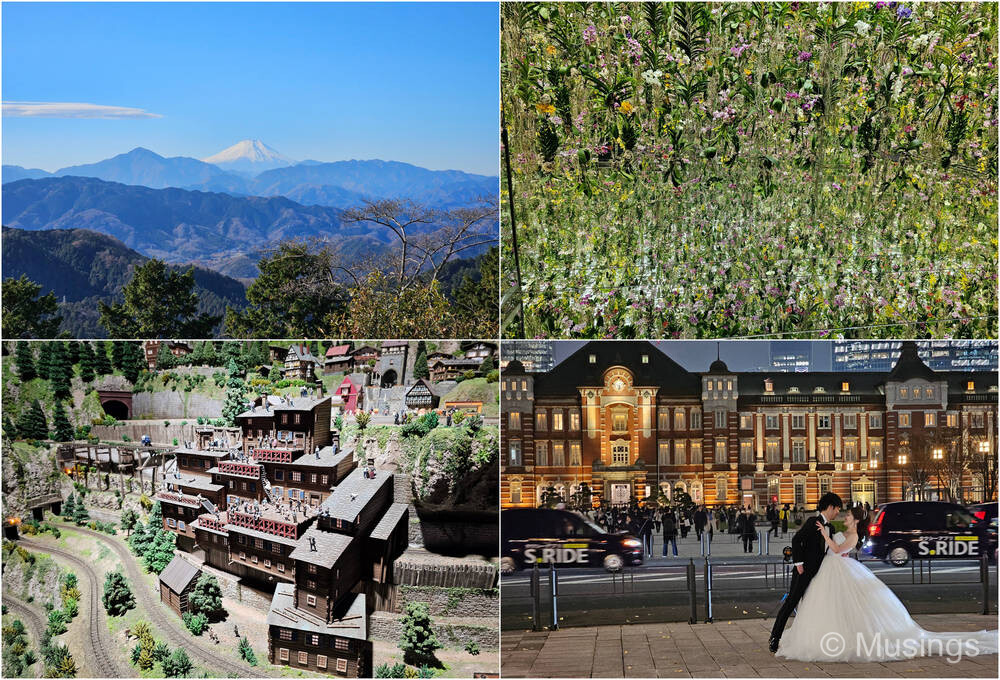
Part 2 that covers Days 09 to 18 continues in the next post!